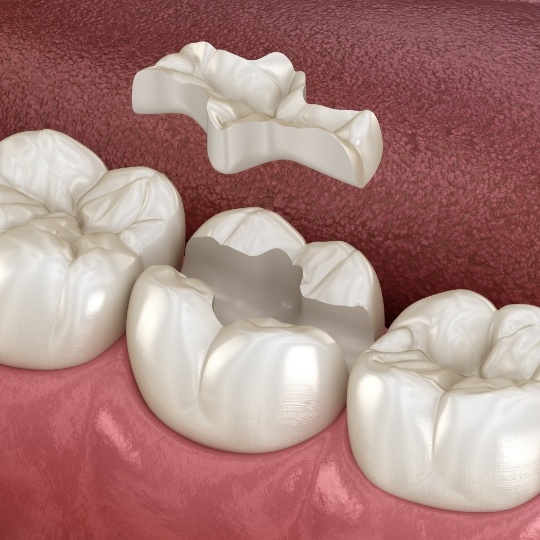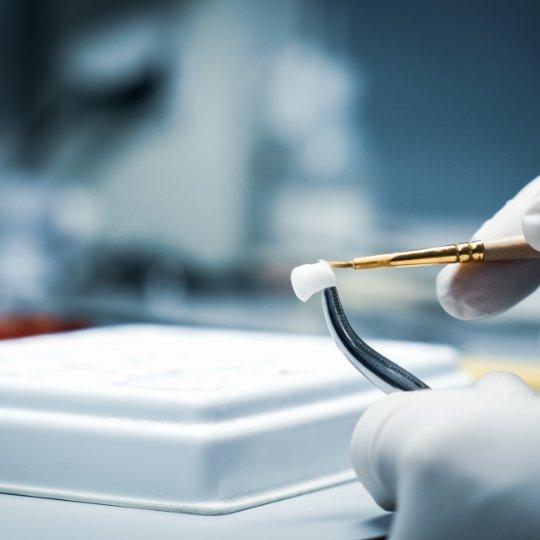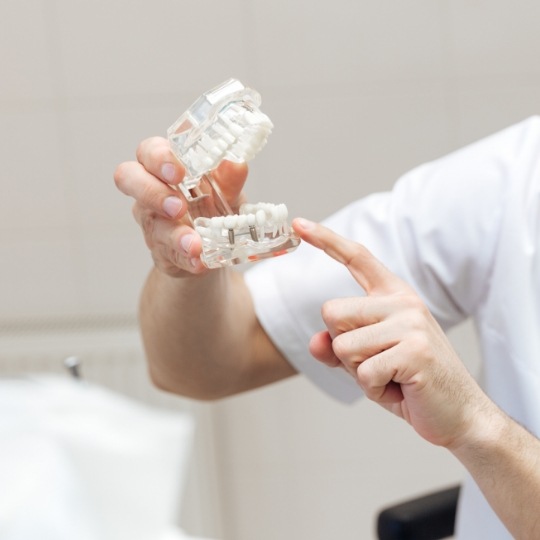Restorative Dentistry – Dallas, TX
A Dazzling Way to Repair Damaged Teeth
Tooth enamel is the strongest substance in your body; in fact, it’s even stronger than your bones! However, it’s still vulnerable to wear and tear over time. Unfortunately, it doesn’t have any way to fix itself after it has become cracked or injured. Dr. Vasquez and Dr. Aldana have multiple ways to restore a damaged or decayed tooth, and each solution is made to be both beautiful and functional. Call Soleil Dental today for help with your damaged teeth through restorative dentistry in Dallas, TX!

Why Choose Soleil Dental for Restorative Dentistry?
- No Mess Digital Impression System
- Kind Bilingual Doctors That Listen
- Variety of Materials for Crowns
Tooth-Colored Fillings

Silver fillings used to be the standard for restoring teeth. While they did work well enough, they tended to stand out, and they could potentially damage the teeth once they reached a certain age. Our dental office has switched to tooth-colored fillings that use composite resin, which is a mixture made from glass and plastic. The material can be molded into the teeth in a way that supports and strengthens the overall dental structure, and it can be shaded to blend in with your natural teeth.
Dental Crowns

Dental fillings are used for small cavities and relatively minor dental damage. Some teeth, however, are more extensively injured and need crowns. These restorations are made to fit over your natural teeth, completely shutting out the bacteria that might cause decay or infection while also keeping them safe from the powerful forces of your bite. Crowns can be made out of gold, but there are also porcelain, porcelain-fused-to-metal, EMAX, and zirconia crowns for patients who want their restorations to match their natural teeth.
Root Canals

Sometimes, decay can reach the pulp at the center of your tooth, causing an infection. Repairing the damage to the tooth won’t be enough; we’ll also need to address the infection to stop your pain and prevent further harm. With a root canal, we will numb your mouth, then remove the pulp and the bacteria causing the infection. Afterward, a crown will be placed on the tooth so that you can keep using it normally.
Tooth Extractions

Having a tooth removed is never ideal, but there are a few circumstances where tooth extraction might be necessary:
- The tooth has been irreparably damaged by severe decay.
- The tooth has come loose because of untreated gum disease.
- The tooth is badly damaged and can’t be fixed with a crown.
Removed teeth can be replaced so that your mouth can continue to function normally. We’ll go over these options with you before we help you determine whether an extraction is the right choice for you.
Wisdom Tooth Extractions
If you have a third molar that isn’t erupting properly or is impacting your other pearly whites, then you might require a wisdom tooth extraction. In some cases, this procedure may be an ideal solution for preventing damage to your nearby teeth, avoiding orthodontic problems from occurring, and maintaining a comfortable smile. During your procedure, our team will make sure to completely numb your mouth beforehand and can even provide sedation dentistry to keep you as comfortable as possible.
Learn MoreI Need a Checkup & Cleaning I Need a Dentist for My Child I am Concerned About Bleeding Gums I am Missing One or More Teeth I Want to Enhance My Smile I Want a Straighter Smile I am Scared of the Dentist I am in Pain & Need Help I Need My Wisdom Teeth Removed I Have Pain in My Jaw View Our Services
